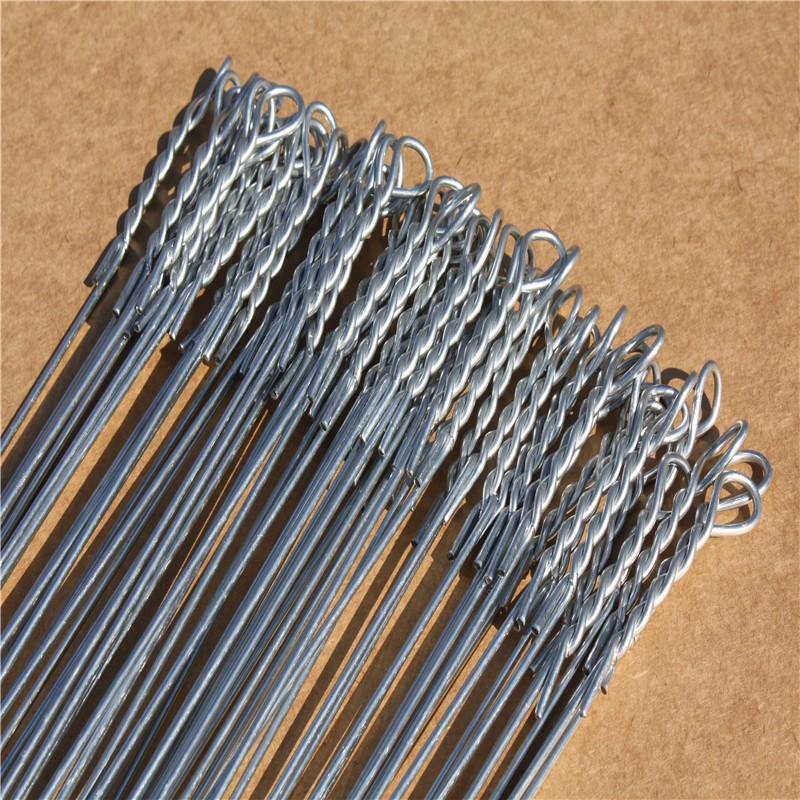What is Baling Wire Used For? Key Industrial Applications
Cotton baling wire serves as the structural backbone of agricultural packaging. Cotton farmers and processors rely on this specialized wire to securely compress and bundle raw cotton into standardized bales for transport and storage. Unlike regular wires, cotton baling wire withstands the extreme pressures of hydraulic baling machines while resisting environmental corrosion from humidity and field conditions.
At Shijiazhuang Yajiada Metal Products Co., Ltd., our premium galvanized cotton baling wire undergoes rigorous processing: high-quality low-carbon steel wire rod is drawn to precision, acid-pickled for rust removal, annealed at high temperatures, then hot-dip galvanized. This creates wire with exceptional ductility, springback characteristics, and a corrosion-resistant zinc layer that extends service life while reducing material costs.


Technical Specifications of Quality Cotton Baling Wire
| Parameter | Standard Range | Premium Grade | Testing Standard |
|---|---|---|---|
| Wire Diameter (mm) | 2.0 - 2.5 | 2.32 ± 0.05 | ASTM A641 |
| Tensile Strength (MPa) | 350 - 550 | 480 ± 20 | ISO 6892-1 |
| Zinc Coating (g/m²) | 20 - 30 | 28 ± 2 | ASTM A123 |
| Elongation at Break (%) | 8 - 12 | 10.5 ± 1 | ISO 15630-1 |
| Loop Tensile Strength (kgf) | 240 - 300 | 285 ± 10 | USDA AMS |

Industry Trends & Global Market Demand
The global cotton baling wire market projects 4.8% CAGR growth through 2030 (Textile Research Journal). This expansion is driven by:
- Mechanization of cotton farming in developing economies
- New biodegradable lubricants reducing friction during high-speed baling
- Corrosion-resistant metallurgical improvements increasing bale storage longevity
- Standardized bale dimensions facilitating automated logistics
"Modern galvanized cotton baling wire must withstand hydraulic pressures exceeding 8,000 psi while maintaining consistent loop integrity across temperature variations. Metallurgical advancements focus on zinc-iron alloy coatings that double traditional corrosion resistance."- International Cotton Advisory Committee Technical Report, 2023

Critical Performance Factors in Cotton Baling Wire Selection
Springback Consistency
Determines tension retention after knotting - minimum 92% elasticity required for USDA certification
Hydrogen Embrittlement Resistance
Hot-dip galvanized wires demonstrate 3x longer fatigue life versus electrogalvanized alternatives
Knot Slippage Threshold
Premium wires maintain
Salt Spray Resistance
Shijiazhuang Yajiada's processing achieves >600 hours protection in ASTM B117 salt spray testing

Technical FAQ: Cotton Baling Wire Standards
What diameter cotton baling wire provides optimal balance between strength and handling?
2.32mm wire (12.5 gauge) delivers ideal strength-to-flexibility ratio certified by USDA AMS standards. Thinner wires risk bale failure while thicker options reduce bales per shipment.
How does zinc coating methodology impact corrosion resistance?
Hot-dip galvanizing creates a zinc-iron alloy layer 3-5x more durable than electroplating. Our thermal diffusion process achieves 28g/m² coating weights meeting ASTM A641 Class 3 specifications.
What mechanical properties prevent breakage during hydraulic compression?
Minimum elongation of 8% combined with 350-550MPa tensile strength ensures controlled deformation under pressure. Our proprietary annealing cycles optimize grain structure for uniform plasticity.
What temperature tolerance does premium wire maintain?
Properly annealed wires retain 95% tensile strength between -20°C to 60°C. ASTM testing confirms consistent loop closure properties across this operational range.
How many bales can quality wire secure before replacement?
Industry benchmarks establish 15,000-20,000 compression cycles for USDA-certified wire. Actual longevity depends on humidity and storage conditions affecting corrosion rates.
What's the industry position on recycled content in baling wire?
Current ISO 14021 standards permit up to 35% recycled content without compromising mechanical properties. Our EAF steel refinement achieves purity levels meeting ASTM A510 specifications.
What safety certifications apply to cotton baling systems?
OSHA 29 CFR 1910.212 mandates wire containment systems. Our products exceed ANSI/ASSP Z359 fall protection standards with engineered snap-prevention features.
Expert Validation & References
Third-party verification validates the engineering specifications discussed in this technical analysis:
- Cotton Incorporated Technical Standards - Material Specifications for Agricultural Baling Systems
- ASTM Material Performance Reports - Corrosion Testing Methodology for Galvanized Steel
- Textile Research Journal - Comparative Analysis of Baling Wire Metallurgical Solutions
- USDA Agricultural Marketing Service - Standard Specifications for Cotton Baling Materials
For detailed technical specifications, request our Engineering Data Sheet: services@y-ironwire.com

















